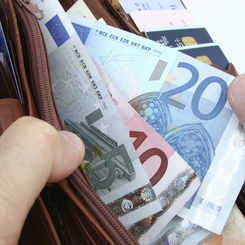After a long build-up, Twitter launched its IPO on November 6, 2013 and submitted itself for the first time to market forces. It was a record-breaking IPO: the price of the stock, first set at $26 USD, increased by 73% within the first hour of trading. Why were investors so keen to jump on the Twitter bandwagon?
At that time, the company had still to prove that could create earnings and openly admitted that it would not be profitable until at least 2015. Many have argued that its success on the stock market points to a second internet bubble, set to pop at any time.
This gain value and the explosion of the price can be partly explained by investors’ very strong expectations for the future growth of Twitter. However, to understand why the Twitter IPO met with such success, one must understand the underlying intangible assets, which are today becoming an increasingly important driving force of value. Four forces are indeed revolutionizing the digital economy: social networks, Cloud Computing, big data, and mobility.
How Do We Measure Intangible Asset?
Indeed, attaching a value to an organization is more difficult than it once was: while some organizational assets – tangible assets like stocks, real estate holdings etc. – are easy to measure and they show up on the balance sheet, other assets – intangible assets like patents, copyrights, trademarks, and brand names, as well as R&D and Big Data – are notoriously hard to objectively evaluate as their value ultimately depends on a businesses’ capacity to use them.
Still, intangible assets represent huge sums of money and contribute a great deal to the success of most organizations. Google, for example, is today valued by the market at roughly $355 Billion USD (Market Capitalization on December 31, 2014). Meanwhile, Google’s balance sheet only accounts for some $96 Million USD in total assets. That leaves a mere $259 Billion USD to be accounted for – a vast sum representing Google’s long list of intangible assets including patents, technologies, trademarks and brand value.
Because intangible assets factor in as a huge part of our economy, organizations are increasingly likely to voluntarily report on them in order to give investors a clear idea of a business’s overall value. But how can we measure them objectively, especially since that brand was developed internally by the firm itself and not purchased on the market at a determined price? Should business then be incited or required to measure and report on their intangible assets in some standardized way?
Despite their economic importance, the jury is still out on this question.
Some argue in favor of reforming the current system…
On the one hand, many researchers argue that it is necessary to review the way we communicate on intangible assets. Although the concept and the accounting rules have been clarified since the introduction of IFRS (international accounting standards), these researchers point out that other changes are to be made to ensure that these assets are measured and presented homogeneously.
Nakamura (2000), for example, argues that in our "new economy", the successful business models rely less and less on physical investment and increasingly on intangible investments. Lev and Zarowin (1999) go further and show that traditional accounting information is less relevant than in the past.
Others argue that information asymmetry is exacerbated in the case of intangible (the insider trading phenomenon in companies with high R&D intensity). Finally investors fail to properly assess the intangible intensive firms, due to the lower relevance of financial statements (Eberhart et al 2004;. Lev et al. 2007).
…Others argue against
However, other researchers argue that too much reporting kills reporting. Penman (2009) points out that the record does not seem useful to financial valuation of companies, investors in fact use mainly the income statement as the first source of information.
Skinner (2008), meanwhile, argues that financial markets work to fund intangible intensive firms and therefore do not require additional information. On the contrary, measuring intangibles may eventually degrade the reliability of financial statements (Skinner, 2008). The example of capitalization of R&D in order to manage earnings is an example of this (Cazavan-Jeny et al. 2011).
So the debate is still raging and will open doors to new avenues of research.
Further Reading:
Cazavan-Jeny, A., Jeanjean, T., Joos, P., 2011. Accounting choice and future performance: The case of R&D accounting in France. Journal of Accounting & Public Policy 30(2), 145-165.
Eberhart, A.C., Maxwell, W.F., Siddique, A.R., 2004. An Examination of Long-Term Abnormal Stock Returns and Operating Performance Following R&D Increases. Journal of Finance 59(2), 623-650.
Lev, B., Nissim, D., Thomas, J., 2007. On the Information Usefulness of R&D Capitalization and Amortization, in: Co, A.P. (Ed.), Visualizing Intangibles: Measuring and Reporting in the Knowledge Economy. S. Zamblon and G. Marzo, pp. 97-128.
Lev, B., Zarowin, P., 1999. The Boundaries of Financial Reporting and How to Extend Them. Journal of Accounting Research 37(2), 353-385.
Nakamura, L., 2000. Economics and the New Economy: The Invisible Hand Meets Creative Destruction. Federal Reserve Bank of Philadelphia Business Review(July/August).
Penman, S.H., 2009. Accounting for Intangible Assets: There is Also an Income Statement. Abacus 45(3), 358-371.
Skinner, D.J., 2008. Accounting for intangibles - a critical review of policy recommendations. Accounting & Business Research 38(3), 191-204.









